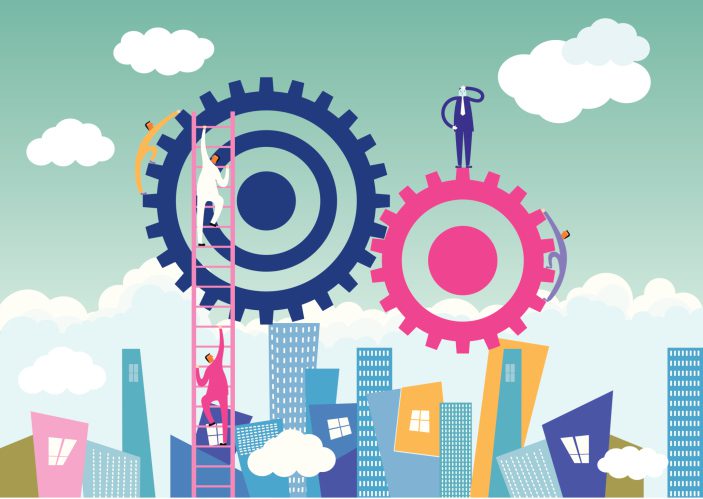According to Frost and Sullivan, 60% of the world’s population is expected to live in urban environments by 2025. It is expected that around 26 global cities and more than 90 sustainable cities will develop. As a result, people occupying just 2 percent of the world’s land will consume about three-quarters of its resources. The increased growth of cities will drive the need to innovate and provide solutions to foster convergence within the city. For instance, The city of Long Beach, California is using smart water meters to detect illegal watering in real time and have been used to help some homeowners cut their water usage by as much as 80%. That’s vital when the state is going through its worst drought in recorded history.
This is the era of “Smart Cities”, a term we are going to be hearing a lot more of in the coming years. The concept of a Smart City implants technology and data collection into objects, turning ‘Internet of Things’ and ‘Big Data’ into a reality. This technology will help our city’s infrastructure become smart, and help citizens by bringing efficiency in their day-to-day task. The smart city market is growing, especially with the rapid rate of urbanization taking place, with the market expected to be a $1.5 trillion by 2020. This significant growth presents certain challenges for organizations and city authorities.
Key challenges, such as traffic congestion, energy usage, public safety, and the building of sustainable communities are top of mind. Smart City solution providers face the challenge of integrating key initiatives within a city’s existing framework. Smart cities are measured by the integration of their infrastructure and the intelligent ways by which they tackle challenges. Enabling integration and convergence with organizations and local authorities to provide solutions for the development of a smart city is crucial. Companies, which use their expertise and provide technological solutions, such as cloud- based services and big data analytics, will be able to improve their position and stay competitive in the market.
For example, Los Angeles uses data from magnetic road sensors and traffic cameras to control traffic lights and thus the flow (or congestion) of traffic around the city. The computerized system controls 4,500 traffic signals around the city and has reduced traffic congestion by an estimated 16%.
Another key challenge in smart cities is the development of an implementation roadmap outlining objectives, stakeholder participation, type of public-private engagement and most importantly funding mechanisms. However, there is no one-size-fits-all approach in this fragmented market with each individual smart city project requiring a custom strategy. Therefore, companies that provide complete solutions in terms of smart city sectors, products, and technologies are best equipped to offer solutions here either as a pre- packaged bundled solution or a-la-carte catering to the specific needs of the city, be it smart transportation, energy or infrastructure.
For example, Songdo, South Korea has been conceived and built as the ultimate Smart City. Trash collection in the city is completely automated, through pipes connected to every building. The solid waste is sorted then recycled, buried or burned for fuel. The city is partnering with Cisco to test other technologies, including home appliances and utilities controlled by your smartphone, and even a tracking system for children (using microchips implanted in bracelets).
Studies show that by the year 2020 over $400 billion a year will be spent on building smart cities. This massive investment is to establish an infrastructure that can send data to the cloud on just about anything: how much traffic rolling through a stoplight, how full a trash dumpster is, or how much water you’re using.
Technologists and analysts are on a path to discovery, obtaining answers on how technology, and the data collected, can make our cities more efficient and cost effective. The current model adopted for IoT is to attract businesses to develop software and hardware applications in this domain. The model also encourages businesses to put their creativity to use for the greater good, making cities safer, smarter and more sustainable. For example, Cisco is opening an Innovation Centre, where the company will work with partners of Internet of Everything (IoE, Cisco’s term for the Internet of Things) solutions. This centre (which will be housed at Cisco New Canadian HQ, a building that is the first truly smart building in North America) key focus is to develop innovative solutions for smart cities. Cisco Executive says, “This building will be a living lab”.
Since 2010, IBM has deployed 700 top experts to help 116 cities around the world in a philanthropic initiative, Smarter Cities Challenge. The Smarter Cities Challenge deploys top IBM experts to help cities around the world address their most critical challenges. IBM put teams on the ground for three weeks to work closely with city leaders and deliver recommendations on how to make the city smarter and more effective.
These examples are just the beginning of the bright future ahead. With the integration of big data and IoT, cities will become smarter, generate data that provides useful information and revolutionize our way of life. Of course, more technology can also mean more opportunities for hackers. As long as municipalities are paying attention to security and protecting their assets/customers, Smart Cities benefit will outweigh the risks.
Want to learn how IoT can benefit YOUR business. Sign up for an absolutely FREE 30-minute consultation with our C-Level Experts.
[cta]
(Excerpts from industry reports/articles by Data Science Central, Financial Post, Forbes, Frost & Sullivan and Smart City Global Solutions)
Written by,
Anurag Kumbhaj
Marketing Manager
MarkiTech
Edited by,
Naman Jaffar
CEO
MarkiTech


